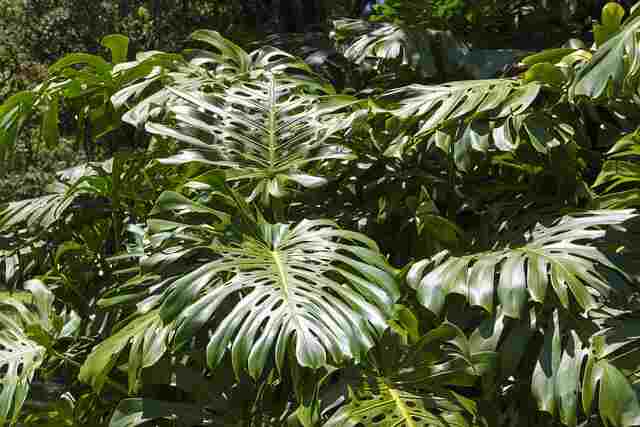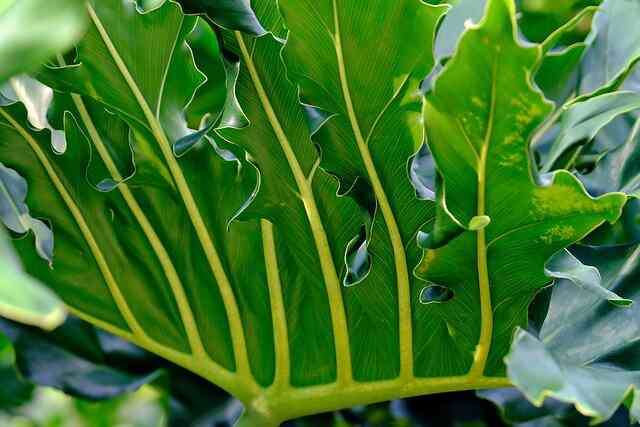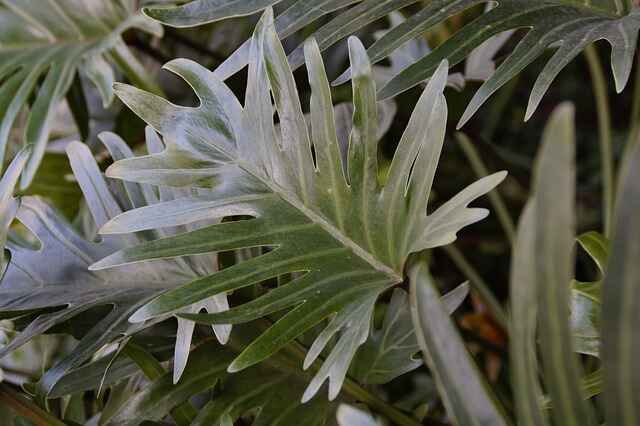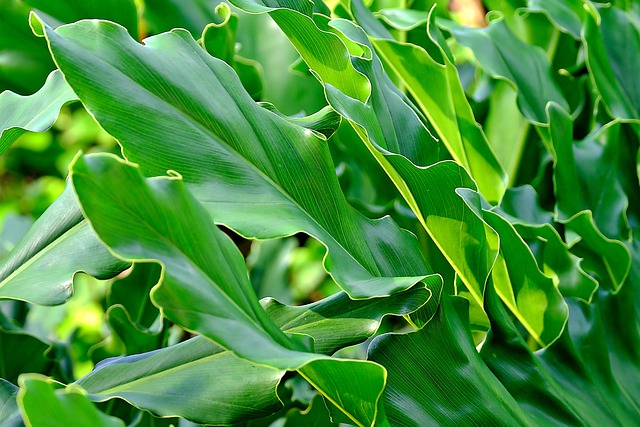Are you looking to add some lush greenery to your home or office?
Philodendrons are a great choice for plant lovers of all levels, with their striking foliage and easy-to-care-for nature.
But where do you start with growing and caring for these tropical beauties?
Whether you’re a seasoned green thumb or a newbie to the world of houseplants, this guide has got you covered. From the basics of soil and light to troubleshooting common problems, you’ll learn everything you need to know to keep your philodendrons thriving.
So let’s dive in and discover the secrets to growing healthy, happy philodendrons that will elevate any space!
Plant overview

Philodendrons are a genus of tropical plants known for their stunning foliage and easy-to-care-for nature. Native to the rainforests of South America and the Caribbean, these plants have become a popular choice for indoor gardeners around the world.
There are over 400 species of philodendrons, ranging from small, trailing plants to large, tree-like specimens. Their leaves can vary in size, shape, and color, with some featuring intricate patterns and variegation. One of the most common types of philodendrons is the heartleaf philodendron, which has small, heart-shaped leaves and is often grown as a hanging plant.
Philodendrons are a great choice for beginners, as they are relatively low-maintenance and can tolerate a range of light and humidity conditions. They prefer well-draining soil and should be watered when the top inch of soil feels dry. They also benefit from occasional fertilization to promote healthy growth.
While philodendrons are generally easy to care for, they can be prone to a few issues, including pests like spider mites and mealybugs, as well as root rot if overwatered. However, with proper care and attention, these stunning plants can bring a touch of tropical beauty to any space.
Benefits of having philodendrons at home
In addition to their striking appearance, philodendrons offer a range of benefits when grown indoors.
Here are some of the top reasons to add these plants to your home:
Air Purification
Like many houseplants, philodendrons can help to purify the air in your home by removing harmful toxins and pollutants. They are particularly effective at removing formaldehyde, which is found in many household products.
Stress Reduction
Studies have shown that simply being around plants can help to reduce stress and anxiety levels. The calming presence of philodendrons can help to create a more relaxing and peaceful environment in your home.
Improved Mood
Indoor plants are also known to have a positive effect on mood and can help to boost overall feelings of happiness and well-being. The vibrant, lush foliage of philodendrons can bring a sense of joy and vitality to any space.
Increased Productivity
In addition to reducing stress and improving mood, having plants in your home can also boost productivity and concentration levels. This can be particularly beneficial if you work from home or spend a lot of time studying.
Aesthetic Appeal
Last but not least, philodendrons are simply beautiful plants that can add a touch of natural beauty to any space. Their unique foliage and wide range of colors and patterns make them a versatile and attractive addition to any home decor.
Overall, the benefits of having philodendrons in your home extend far beyond their aesthetic appeal. By improving air quality, reducing stress levels, and boosting mood and productivity, these plants can enhance your overall quality of life in a variety of ways.
Types of Philodendrons

There are over 400 different species of philodendrons, each with its own unique characteristics and growing habits.
Here are some of the most popular types of philodendrons:
Heartleaf Philodendron
The heartleaf philodendron is one of the most commonly grown types of philodendrons. It has small, heart-shaped leaves that trail down from the plant, making it a popular choice for hanging baskets.
Split-Leaf Philodendron
The split-leaf philodendron, also known as the Monstera deliciosa, has large, perforated leaves that give it a distinctive, tropical look. It is a popular choice for larger indoor spaces.
Bird’s Nest Philodendron
The bird’s nest philodendron has a rosette of wavy, glossy leaves that give it a unique, compact appearance. It is a great choice for smaller spaces or as a table plant.
Philodendron Prince of Orange
The Prince of Orange philodendron has striking orange-colored new growth, which fades to green as the leaves mature. It is a relatively new cultivar that has become popular in recent years.
Philodendron Brasil
The Brasil philodendron has bright green, heart-shaped leaves with yellow variegation. It is a popular choice for adding a pop of color to indoor spaces.
Philodendron Xanadu
The Xanadu philodendron has glossy, deeply lobed leaves that give it a unique, sculptural appearance. It is a great choice for adding texture to indoor spaces.
Philodendron Selloum
The Selloum philodendron has large, deeply lobed leaves that give it a tropical, jungle-like appearance. It is a popular choice for larger indoor spaces or as a statement plant.
These are just a few of the many types of philodendrons available. Whether you’re looking for a small hanging plant or a large, dramatic statement piece, there is a philodendron that is perfect for your space.
How to plant philodendrons?
Philodendrons can be planted year-round, but the best time to plant them is during the spring or summer when temperatures are warmer and there is more daylight.
Here are some steps to follow when planting philodendrons:
Choose the right pot
Select a pot that is large enough to accommodate the philodendron’s root system, with plenty of room for growth. Choose a pot with drainage holes to ensure proper drainage.
Add potting soil
Use a well-draining potting soil, preferably one that is formulated for houseplants. Fill the pot with soil, leaving enough room at the top to accommodate the plant.
Plant the philodendron
Remove the philodendron from its current pot and gently loosen the roots. Place the plant in the new pot and fill in around the roots with soil. Firm the soil around the base of the plant, but be careful not to compact it too much.
Water thoroughly
Water the plant thoroughly after planting to help settle the soil around the roots. Be sure not to overwater, as this can lead to root rot.
Place in a suitable location
Choose a location for your philodendron that receives bright, indirect light. Avoid placing the plant in direct sunlight, as this can scorch the leaves. Philodendrons also prefer warm temperatures and humid conditions, so consider placing a tray of water near the plant or using a humidifier to increase humidity levels.
By following these simple steps, you can ensure that your philodendron gets off to a healthy start and thrives in its new home.
How to care for philodendrons?

Soil
Philodendrons require well-draining soil that is rich in organic matter. The ideal soil for philodendrons should be loose and porous, allowing water to drain away quickly and preventing the roots from becoming waterlogged.
A good soil mix for philodendrons can be made by combining equal parts of peat moss, perlite, and vermiculite. This will provide a good balance of water retention and drainage, while also providing the plant with essential nutrients.
It’s important to avoid using heavy, compacted soils or soils that retain too much water, as this can lead to root rot and other problems. If you’re unsure about the quality of your soil, you can add sand or gravel to improve drainage, or consider using a commercial potting mix designed for indoor plants.
When planting philodendrons, be sure to choose a pot with drainage holes to ensure proper drainage. And when watering your plant, be sure to allow the soil to dry out slightly between waterings to prevent overwatering and root rot.
Water
Philodendrons require regular watering, but it’s important not to overwater them. Overwatering can lead to root rot and other problems, while underwatering can cause the leaves to wilt and dry out.
The best way to water a philodendron is to wait until the top inch of soil feels dry to the touch, and then water thoroughly until water drains out of the bottom of the pot. Be sure to empty the saucer underneath the pot to prevent the roots from sitting in water.
The frequency of watering will depend on the temperature and humidity of your environment, as well as the size of your pot and the type of soil you’re using. In general, philodendrons prefer moist soil but can tolerate brief periods of dryness.
In the winter months, when the plant is in a dormant state, it may require less frequent watering. Be sure to adjust your watering schedule accordingly to avoid overwatering during this time.
If you notice that your philodendron is wilting or the leaves are turning yellow, it may be a sign of overwatering. In this case, reduce the frequency of watering and make sure the soil is well-draining. On the other hand, if the leaves are drooping and the soil feels dry, it may be a sign of underwatering. Water the plant thoroughly and adjust your watering schedule accordingly.
Light
Philodendrons require bright, indirect light to thrive. They can also tolerate lower light conditions, but may not grow as quickly or produce as many leaves.
Direct sunlight can scorch the leaves of philodendrons, so it’s best to place them in a location where they receive bright, filtered light. A north-facing window is a good option, as it provides bright, indirect light without direct sunlight. You can also place your philodendron in an east or west-facing window, but be sure to provide some shade during the hottest part of the day to avoid burning the leaves.
If your philodendron is not receiving enough light, it may become leggy and produce fewer leaves. In this case, you can consider supplementing with artificial light, such as fluorescent or LED grow lights. Place the lights close to the plant, but be sure not to let them touch the leaves or overheat the plant.
On the other hand, if your philodendron is receiving too much light, it may show signs of leaf burn or wilting. In this case, move the plant to a shadier location or provide some shade with a sheer curtain or blinds. By providing the right amount of light, you can help your philodendron to grow healthy, vibrant leaves and thrive in its environment.
Temperature
Philodendrons prefer warm and humid environments, with temperatures ranging between 65 to 85 degrees Fahrenheit (18 to 29 degrees Celsius). They can tolerate slightly cooler temperatures, but should not be exposed to temperatures below 55 degrees Fahrenheit (13 degrees Celsius).
It’s important to avoid exposing philodendrons to sudden temperature changes, such as drafts from windows or air conditioning vents. These can cause the plant to become stressed and susceptible to pests and diseases.
To create a suitable environment for your philodendron, you can mist the leaves regularly to increase humidity, or place a tray of water near the plant to create a humid microclimate. You can also use a humidifier to increase the overall humidity in the room.
In the winter months, it’s important to keep philodendrons away from cold windows and drafty areas. If necessary, you can use a space heater to maintain a stable temperature around the plant. By providing the right temperature and humidity levels, you can help your philodendron to grow healthy and thrive in its environment.
Humidity
Philodendrons prefer high humidity levels, as they are native to tropical regions with humid climates. Ideally, the humidity around your philodendron should be between 60% to 80%.
Low humidity can cause the leaves of the philodendron to brown or curl, while high humidity can promote fungal growth and pests. To increase humidity around your philodendron, you can use a humidifier, place a tray of water near the plant, or mist the leaves regularly.
If you live in a dry climate, you may need to mist your philodendron several times a day to maintain the desired humidity levels. You can also group your philodendron with other plants to create a microclimate with higher humidity.
It’s important to avoid getting water on the leaves of the philodendron, as this can promote fungal growth and damage the leaves. Instead, aim to mist around the plant, or use a spray bottle with a fine mist setting to mist the leaves.
By maintaining high humidity levels, you can help your philodendron to grow healthy, lush leaves and thrive in its environment.
Fertilizer
Philodendrons benefit from regular fertilization during the growing season, typically from spring to fall. A balanced, water-soluble fertilizer with a ratio of 20-20-20 or 10-10-10 is suitable for most philodendron varieties.
It’s important not to over-fertilize your philodendron, as this can lead to salt buildup in the soil and damage the roots. Follow the instructions on the fertilizer package and use half-strength fertilizer every two to four weeks.
During the winter months, when the plant is in a dormant state, reduce or stop fertilizing altogether. This will allow the plant to rest and prepare for the next growing season.
If you notice that your philodendron is not growing well or the leaves are turning yellow, it may be a sign of nutrient deficiencies. In this case, you can increase the frequency of fertilization or switch to a fertilizer with a higher nitrogen content to promote leaf growth.
It’s important to remember that fertilization is just one aspect of caring for your philodendron. Providing the right amount of light, water, and humidity, as well as proper soil and potting, are also crucial for the plant’s health and growth.
How to prune philodendrons?

Pruning philodendrons is an important part of caring for these plants, as it helps to keep them healthy, and bushy, and promote new growth.
Here are the steps to prune your philodendron:
- Identify the parts to prune: Look for any damaged, diseased, or dead leaves, stems, or branches. Also, look for any stems that are too long or leggy, as they can be pruned to promote bushy growth.
- Sterilize your pruning tools: Use a pair of clean and sharp pruning shears or scissors, and sterilize them with rubbing alcohol or a mixture of one-part bleach and nine parts water. This will help prevent the spread of diseases and pests.
- Prune the stems: Make a clean cut at a 45-degree angle, just above a leaf node or where the stem meets the main branch. Avoid cutting too close to the node or the branch, as this can damage the plant.
- Remove the leaves: For any leaves that are yellow, brown, or wilted, remove them at the base of the stem. This will prevent them from attracting pests or spreading diseases to the rest of the plant.
- Monitor the plant: Check your philodendron regularly for new growth, and prune as necessary to promote bushy growth and maintain the desired shape.
Pruning should be done during the growing season, typically from spring to fall, as this is when the plant is actively growing. Avoid pruning during the winter months, when the plant is in a dormant state.
By pruning your philodendron regularly, you can help keep it healthy and encourage new growth.
How to propagate philodendrons?
Philodendrons are easy to propagate, and there are several methods you can use.\
Here are three common methods:
Stem cuttings
- Take a stem cutting that is at least 4-6 inches long, and has a few leaves attached.
- Cut the stem just below a node, where the leaves meet the stem.
- Remove any leaves that are close to the bottom of the stem, and dip the cut end in the rooting hormone.
- Plant the stem cutting in a pot with well-draining soil, and keep it moist and in a warm, bright location.
- Roots should develop within a few weeks.
Air layering
- Select a healthy stem and make a small incision in the middle of the stem, just below a node.
- Insert a toothpick or a piece of wire into the incision to keep it open, and wrap damp sphagnum moss around the incision.
- Cover the moss with plastic wrap and secure it with tape.
- Keep the moss moist, and roots should develop within a few weeks.
- Once the roots have formed, cut the stem below the moss and plant it in a pot with well-draining soil.
Division
- If your philodendron has multiple stems or has grown too large for its pot, you can divide it into smaller plants.
- Carefully remove the plant from its pot, and gently separate the roots and stems into smaller sections.
- Each section should have a few stems and a healthy root system.
- Plant each section in a pot with well-draining soil, and keep it moist and in a warm, bright location.
Propagation is best done during the growing season, typically from spring to fall, as this is when the plant is actively growing. With proper care and attention, your newly propagated philodendron should grow into a healthy, mature plant.
Common pests and problems

Like any plant, philodendrons are susceptible to a few common pests and problems. Here are some of the most common issues to watch out for:
Spider mites
These tiny pests can infest philodendrons and cause webbing, yellowing leaves, and leaf drop. To control spider mites, rinse the plant with a strong stream of water, and spray it with insecticidal soap or neem oil.
Mealybugs
These soft-bodied pests can leave a white, cottony residue on the plant, and cause stunted growth and yellowing leaves. To control mealybugs, remove them with a cotton swab dipped in rubbing alcohol, and spray the plant with insecticidal soap or neem oil.
Scale insects
These small, flat pests can be found on the leaves and stems of philodendrons and can cause yellowing leaves and a sticky residue on the plant. To control scale insects, remove them with a cotton swab dipped in rubbing alcohol, and spray the plant with insecticidal soap or neem oil.
Root rot
Overwatering or poorly-draining soil can cause root rot, which can lead to wilted leaves, yellowing leaves, and stem the collapse. To prevent root rot, make sure your philodendron is planted in well-draining soil, and only water when the top inch of soil is dry to the touch.
Yellowing leaves
Yellowing leaves can be a sign of overwatering, underwatering, nutrient deficiency, or pest infestations. Check the soil moisture, soil pH, and inspect the plant for pests to determine the cause of the yellowing leaves.
By keeping an eye out for these common pests and problems, you can help keep your philodendron healthy and thriving. If you notice any issues with your plant, take action quickly to prevent further damage.
Conclusion
Philodendrons are a beautiful and versatile plant that can be a great addition to any indoor or outdoor space. With their lush foliage and easy-to-care-for nature, they are perfect for both novice and experienced gardeners alike.
By following the tips and guidelines outlined in this article, you can successfully grow and care for your philodendron, and enjoy its beauty for years to come.
Remember to keep an eye out for common pests and problems, and to adjust your care routine as needed to keep your plant healthy and thriving.
Whether you choose a classic green philodendron or a more unique variety, these plants are sure to add a touch of natural beauty to your home or garden.
Learn how to grow and care for philodendron plants with our expert tips and tricks. Discover the best practices for a healthy and thriving philodendron!
You may also like to read






